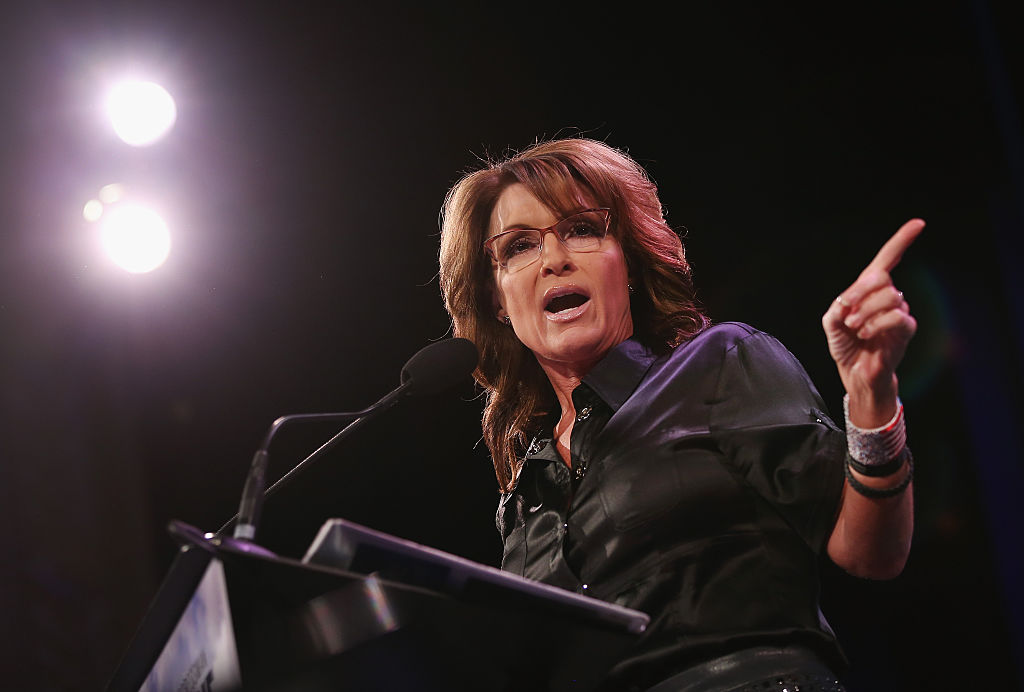In what could be the battle royale of modern-day defamation cases, jury selection begins this week in Sarah Palin’s suit against The New York Times.
With the trial set to begin on Feb. 1, Palin and her lawyers will argue that the Times blamed her for a 2011 shooting at a political event in Tucson, Arizona, that severely wounded Democratic Rep. Gabrielle Giffords.
In the Times editorial at issue, a Palin PAC was not only linked to political violence in general, but readers were also led to believe that one of its ads was linked to the Giffords shooting. The day after publication, the piece was corrected to state that there was no link between Palin or her PAC and the shooting, but the libelous statement was already out there.
It’s important to remember that the bar for defamation is set significantly higher for public figures such as Palin.
The former vice presidential candidate is technically accusing the Times of libel, which is the written form of defamation. What the court is going to look at, once it gets through what may be a challenging jury selection given how polarizing both Palin and The New York Times are for some, is the long-standing balance between the conflicting rights of both parties to a libel suit.
This goes way back to 1964, to another case involving the Times.
New York Times v. Sullivan is the case today’s Times will hope protects it. The Supreme Court in Sullivan established a principle that stands today — that the First Amendment should protect words used against a public official that might otherwise be libel so that we can all have strong debate about public affairs and our government.
Michael Epstein, a New Jersey lawyer, reminds us that in setting the law of the land for defamation, the court balances competing interests:
“The Supreme Court is always trying to find the balance between protecting public figures from being defamed, while allowing necessary debate about government and politics. This often depends upon the situation and actors, as the Court will look at the context in a defamation claim involving a public figure.”
Palin’s lawsuit was originally thrown out at the trial court level, but in 2019, the Second Circuit heard her appeal and sided with her. In an interesting twist, after the Second Circuit kicked the case back to the trial court, the original trial judge denied the Times’ motion for summary judgment, allowing the case to move forward.
In the district court, Palin had argued that the enhanced defamation rule for public figures — that there needs to be malice in the defamatory statements — should be overturned. The judge wasn’t about to do that, but decided that there was enough evidence of malice in this case for it to move forward.
The malice standard as applied in practice here means that Palin can only win her suit against the Times if the newspaper made the allegedly defamatory statements knowing that they were false or — and this is the foundation of Palin’s claim — with “reckless disregard” as to whether they were false.
In today’s context, this standard is going to be a very interesting one for the trial court to examine.
Since the 2011 Giffords shooting, and even since the 2017 opinion piece that has the Times in hot water, the world has changed. Because communications are far more instantaneous and the number of web-based media sources is exponentially larger, reckless disregard for malice is harder to pinpoint.
As we do something each day as simple as scanning our online news feeds or scrolling through dangerous platforms such as TikTok, defamation seems to be more prevalent than ever.
It might be time for the Supreme Court to reassess Sullivan in this context. It may be given the opportunity here, as no matter the result in February, this case will almost certainly head back to the Second Circuit on appeal and then, perhaps, to the Supreme Court.
Whether Palin gets a win in court remains to be seen, but what is certain is that this case will have more twists and turns, some perhaps comical. Last week, Palin’s lawyers moved to have footage of her appearances on the TV show “The Masked Singer” banned from evidence.
The Times was scheduled on Monday to reply to this filing, aimed at barring jurors from seeing not only those TV appearances, in which Palin sang dressed as what appeared to be a furry stuffed animal, but also pieces of evidence including her Instagram account and the online store on her website.
This article appeared originally on The Western Journal.















 Continue with Google
Continue with Google